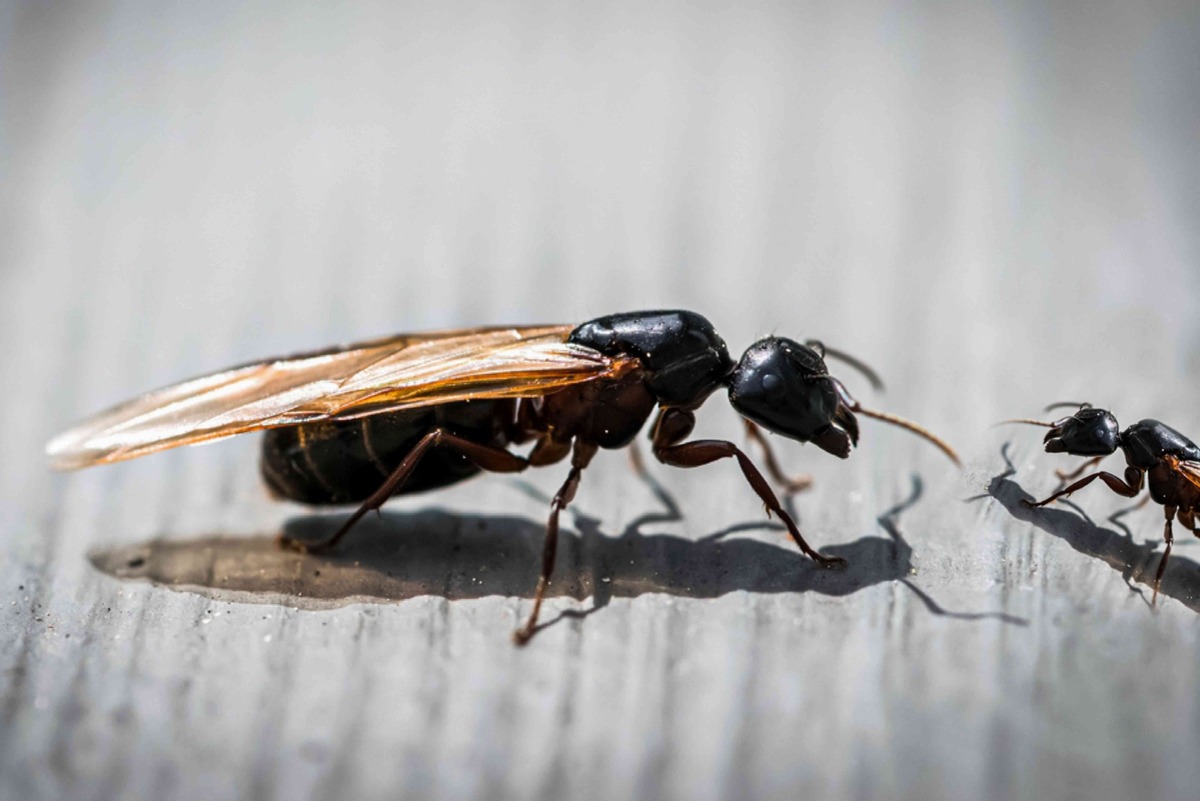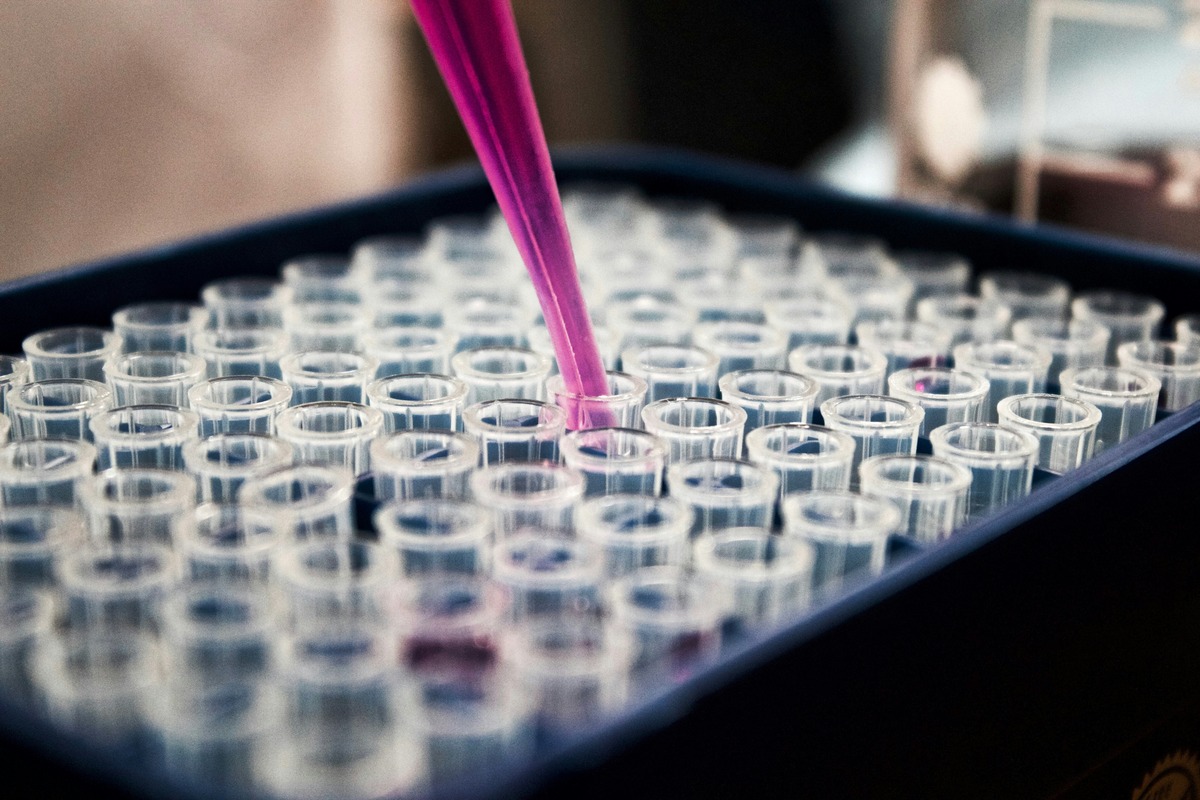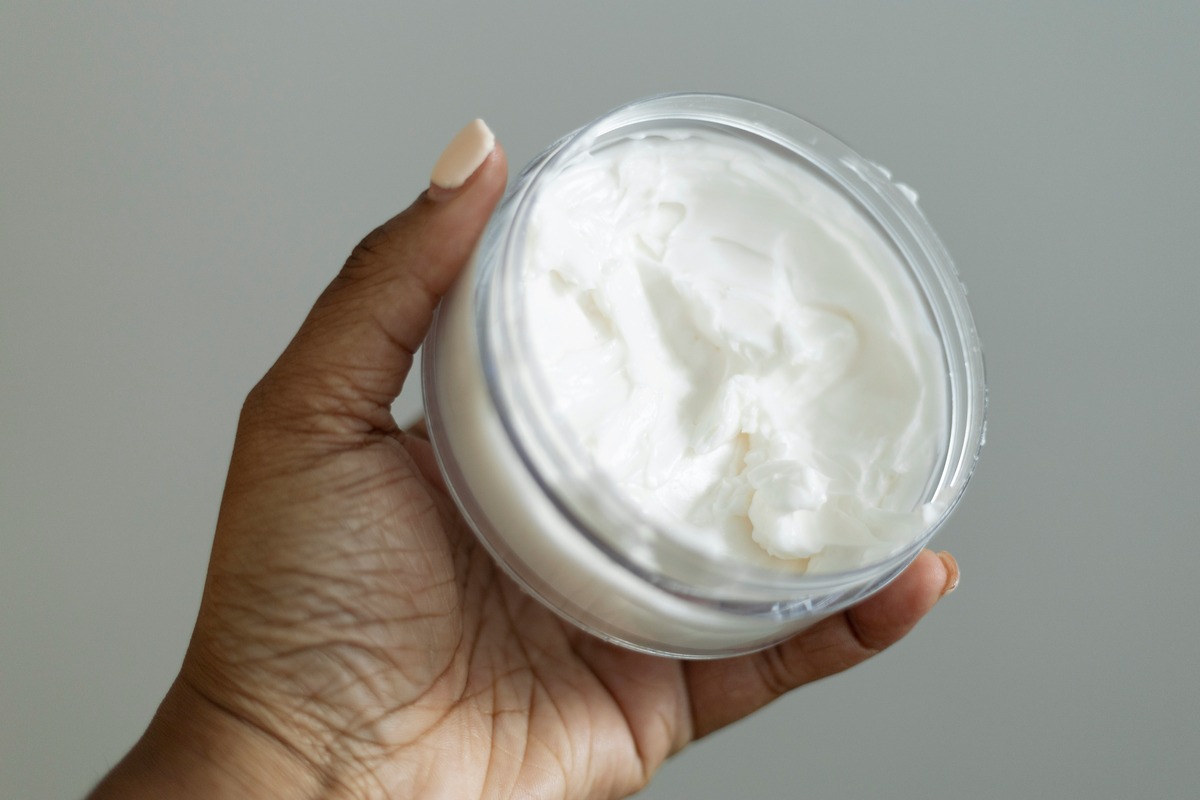Home>Science>The Surprising Reason Why Your Skin Doesn’t Tan


Science
The Surprising Reason Why Your Skin Doesn’t Tan
Published: February 22, 2024
Discover the science behind why your skin may not tan, and learn surprising reasons for this phenomenon. Explore the factors affecting skin pigmentation.
(Many of the links in this article redirect to a specific reviewed product. Your purchase of these products through affiliate links helps to generate commission for Noodls.com, at no extra cost. Learn more)
Table of Contents
Introduction
Tanning has long been associated with the epitome of health and beauty, with bronzed skin often considered a symbol of vitality and an active lifestyle. However, have you ever wondered why some individuals seem to effortlessly achieve a sun-kissed glow, while others struggle to tan despite prolonged exposure to sunlight? The answer lies in a fascinating interplay of biological, genetic, and environmental factors that determine the skin's response to UV radiation.
In this article, we will delve into the intricate science behind tanning, unraveling the mysteries of melanin, the impact of genetics, and the influence of different skin types. We will also explore the role of environmental factors in modulating the skin's response to sunlight, shedding light on why some individuals tan more easily than others.
So, if you've ever pondered why your skin doesn't tan as quickly as your friend's, or why you seem to burn rather than tan, you're in for a captivating journey through the fascinating world of skin biology and genetics. Let's embark on this enlightening exploration to uncover the surprising reasons behind the variations in tanning abilities among individuals.
The Science of Tanning
Tanning is a natural biological response of the skin to exposure to ultraviolet (UV) radiation, typically from sunlight. The process of tanning occurs due to the skin's attempt to protect itself from the harmful effects of UV radiation. When the skin is exposed to UV rays, it triggers a complex series of physiological and biochemical reactions within the skin cells.
The primary player in the tanning process is melanin, a pigment produced by specialized cells called melanocytes. Melanin acts as the skin's natural defense mechanism against UV radiation by absorbing and dissipating the incoming UV rays. This protective action helps to prevent UV-induced damage to the DNA within skin cells, reducing the risk of mutations and skin cancers.
When the skin is exposed to UV radiation, the melanocytes in the skin produce more melanin in response to the stimulus. This increase in melanin production leads to the darkening of the skin, resulting in the characteristic tanned appearance. The darkening effect is a result of the melanin pigment accumulating in the outer layers of the skin, forming a protective shield against further UV damage.
The tanning process can be viewed as the skin's adaptive mechanism to mitigate the harmful effects of UV radiation. However, it's important to note that while tanning provides some level of protection against UV-induced damage, it does not provide complete immunity. Prolonged or excessive exposure to UV radiation can still lead to sunburn, premature aging of the skin, and an increased risk of skin cancer.
Understanding the science of tanning provides valuable insights into the body's natural defense mechanisms and the intricate ways in which the skin responds to environmental stimuli. By unraveling the underlying biological processes involved in tanning, we gain a deeper appreciation for the remarkable complexity of the human body and its ability to adapt to varying environmental conditions.
In the following sections, we will explore the specific factors that influence an individual's tanning ability, including the role of melanin, the impact of genetics, different skin types, and environmental factors. Through this exploration, we aim to shed light on the surprising reasons behind the variations in tanning abilities among individuals.
The Role of Melanin
Melanin, often referred to as the body's natural sunscreen, plays a pivotal role in the skin's response to UV radiation and is central to the tanning process. This pigment, produced by melanocytes, serves as the skin's primary defense mechanism against the damaging effects of UV rays. When the skin is exposed to sunlight, the melanocytes spring into action, ramping up melanin production as a protective response.
There are two main types of melanin: eumelanin and pheomelanin. Eumelanin, which ranges in color from brown to black, is responsible for the varying shades of brown skin tones, while pheomelanin, which is reddish-yellow in color, contributes to the pigmentation of red hair and freckles. The ratio and distribution of these two types of melanin in the skin determine an individual's skin color and their ability to tan.
The production of melanin is a highly regulated process influenced by genetic and environmental factors. Upon UV exposure, the melanocytes increase melanin synthesis and transfer it to the surrounding skin cells, where it forms a protective shield. This process results in the darkening of the skin, commonly recognized as a tan. The degree of tanning achieved is influenced by the baseline level of melanin in the skin, with individuals possessing higher melanin levels typically tanning more readily and exhibiting a deeper tan.
Interestingly, the distribution of melanin in the skin is not uniform, leading to variations in tanning patterns across different body areas. For instance, areas with thicker skin, such as the back, may tan more easily than thinner-skinned areas like the shoulders or chest. This non-uniform distribution of melanin underscores the intricate nature of the skin's response to UV radiation and contributes to the diverse tanning outcomes observed among individuals.
Furthermore, the presence of melanin provides some level of natural protection against UV-induced DNA damage, serving as a crucial line of defense against the harmful effects of sunlight. However, it's important to note that while melanin offers some degree of photoprotection, it is not a fail-safe barrier against UV radiation. Therefore, practicing sun-safe behaviors, such as using sunscreen and seeking shade, remains essential for minimizing the risk of sunburn and skin damage.
In essence, the role of melanin in the tanning process is multifaceted, encompassing both protective and pigmentation functions. Its intricate interplay with UV radiation, genetic factors, and skin physiology highlights the remarkable complexity of the body's adaptive responses. By understanding the pivotal role of melanin in tanning, we gain valuable insights into the intricate mechanisms that govern the skin's ability to adapt and protect itself in the face of environmental challenges.
The Impact of Genetics
The impact of genetics on an individual's tanning ability is profound, shaping the baseline characteristics of the skin's response to UV radiation. Genetic factors play a pivotal role in determining an individual's baseline level of melanin production, skin pigmentation, and susceptibility to sunburn. These genetic determinants are influenced by a complex interplay of inherited traits, including variations in specific genes that govern melanin synthesis, skin color, and UV sensitivity.
One of the key genetic determinants of tanning ability is the presence of specific gene variants that regulate the production of melanin. Variations in genes such as MC1R, ASIP, and OCA2 have been identified as influential factors in determining an individual's skin pigmentation and tanning response. For instance, certain variants of the MC1R gene are associated with red hair, fair skin, and reduced ability to tan, highlighting the significant impact of genetic variations on tanning outcomes.
Moreover, the inheritance of specific alleles related to melanin production and distribution can significantly influence an individual's predisposition to tan or burn in response to UV exposure. Alleles associated with higher eumelanin production are linked to a greater capacity for tanning and increased photoprotection, while alleles linked to lower melanin levels may result in reduced tanning ability and heightened susceptibility to sunburn.
In addition to melanin-related genes, genetic variations in DNA repair mechanisms and antioxidant pathways can also impact the skin's response to UV radiation. Individuals with genetic predispositions that affect DNA repair efficiency or antioxidant defense mechanisms may exhibit differences in their ability to mitigate UV-induced damage, influencing their tanning capacity and sunburn susceptibility.
Furthermore, the inheritance of specific skin types, such as Fitzpatrick skin types, which categorize individuals based on their response to UV exposure, underscores the genetic underpinnings of tanning ability. The genetic basis of skin types, encompassing factors such as skin color, UV sensitivity, and tanning propensity, highlights the intricate role of genetics in shaping an individual's response to sunlight.
Understanding the impact of genetics on tanning ability provides valuable insights into the diverse tanning outcomes observed among individuals. By unraveling the genetic determinants that underpin the skin's response to UV radiation, we gain a deeper appreciation for the intricate interplay of inherited traits and biological mechanisms that contribute to the fascinating variations in tanning abilities across different individuals.
The Influence of Skin Type
The influence of skin type on tanning ability is a pivotal factor that shapes an individual's response to UV radiation. Skin type, often classified using the Fitzpatrick scale, encompasses a spectrum of characteristics, including skin color, UV sensitivity, and tanning propensity. Understanding the diverse skin types and their impact on tanning provides valuable insights into the intricate interplay of skin physiology, genetics, and environmental factors.
The Fitzpatrick scale categorizes individuals into six skin types based on their response to UV exposure, ranging from very fair (Type I) to deeply pigmented (Type VI). Each skin type exhibits distinct characteristics that influence its tanning ability and susceptibility to sunburn. For instance, individuals with Type I skin, characterized by very fair skin, often burn easily and struggle to tan, while those with Type VI skin, characterized by deeply pigmented skin, tan readily and rarely burn.
The variations in tanning ability across different skin types are attributed to differences in melanin production, skin pigmentation, and UV sensitivity. Individuals with fair skin types (Type I-III) typically have lower baseline levels of melanin and are more susceptible to UV-induced damage, leading to a reduced capacity for tanning and an increased risk of sunburn. In contrast, individuals with darker skin types (Type IV-VI) possess higher baseline melanin levels, affording greater photoprotection and enhanced tanning ability.
Moreover, the distribution of melanin in the skin varies across different skin types, influencing the patterns and intensity of tanning. Areas with thicker skin, such as the back and legs, may tan more easily in individuals with darker skin types, while those with fairer skin types may experience uneven tanning and heightened susceptibility to sunburn.
In addition to melanin-related differences, variations in skin type also encompass factors such as UV sensitivity, skin reactivity, and the presence of freckles or moles. These characteristics further contribute to the diverse tanning responses observed among individuals with different skin types, highlighting the multifaceted nature of skin physiology and its impact on tanning outcomes.
By recognizing the influence of skin type on tanning ability, we gain a deeper understanding of the intricate interplay of genetic, physiological, and environmental factors that underpin the skin's response to UV radiation. This awareness also underscores the importance of tailored sun protection measures based on individual skin types, emphasizing the need for personalized approaches to sun safety and tanning practices.
In essence, the influence of skin type on tanning ability encompasses a rich tapestry of biological and genetic factors that contribute to the diverse tanning outcomes observed across different individuals. By unraveling the complexities of skin types and their impact on tanning, we gain valuable insights into the remarkable diversity of the human skin and its adaptive responses to sunlight.
Environmental Factors
Environmental factors play a significant role in modulating the skin's response to UV radiation and exert a profound influence on an individual's tanning ability. The interplay of environmental elements, such as geographic location, altitude, and seasonal variations, contributes to the diverse tanning outcomes observed among individuals. Understanding the impact of environmental factors provides valuable insights into the dynamic interactions between the external environment and the skin's adaptive responses to sunlight.
One of the key environmental factors that influence tanning ability is the geographic location and proximity to the equator. Individuals residing in regions closer to the equator, where sunlight is more intense and UV radiation levels are higher, may experience more rapid and pronounced tanning compared to those in more temperate or polar regions. The heightened UV exposure in equatorial regions stimulates melanin production and tanning responses, leading to darker skin tones as a natural photoprotective mechanism.
Altitude is another environmental variable that affects tanning outcomes, particularly due to the elevation's impact on UV intensity. At higher altitudes, such as mountainous regions, UV radiation levels can be more intense, potentially leading to accelerated tanning and increased sunburn risk. The combination of elevated UV exposure and thinner air at higher altitudes can heighten the skin's susceptibility to UV-induced damage, influencing the tanning capacity of individuals in these environments.
Seasonal variations in sunlight exposure also contribute to fluctuations in tanning ability. During the summer months, when sunlight is more abundant and UV radiation levels are higher, individuals may experience more rapid tanning compared to the winter months. The reduced sunlight exposure in winter can lead to a fading of the tan, highlighting the seasonal dynamics of tanning and the influence of sunlight availability on the skin's pigmentation responses.
Furthermore, environmental factors such as air pollution and ozone depletion can impact tanning outcomes by altering UV penetration and skin exposure. Increased air pollution and reduced ozone levels can elevate the skin's exposure to UV radiation, potentially influencing tanning patterns and sunburn susceptibility. These environmental stressors underscore the interconnected nature of environmental factors and their impact on the skin's responses to sunlight.
By recognizing the multifaceted influence of environmental factors on tanning ability, we gain a deeper understanding of the dynamic interplay between the external environment and the skin's adaptive mechanisms. This awareness also underscores the importance of considering environmental variables when implementing sun protection measures and advocating for sun-safe behaviors tailored to specific environmental conditions.
In essence, environmental factors encompass a diverse array of elements that shape the skin's response to UV radiation, contributing to the fascinating variations in tanning abilities observed across different geographical locations, altitudes, and seasonal dynamics. By unraveling the intricate interactions between the environment and tanning outcomes, we gain valuable insights into the remarkable adaptability of the skin and its responsiveness to external stimuli.
Conclusion
In conclusion, the intriguing world of tanning unveils a captivating tapestry of biological, genetic, and environmental influences that shape the skin's response to UV radiation. From the pivotal role of melanin as the body's natural defense mechanism to the profound impact of genetics on tanning ability, the intricate interplay of these factors underscores the remarkable adaptability and diversity of the human skin.
The science of tanning reveals the skin's innate ability to adapt and protect itself in the face of environmental challenges, highlighting the dynamic nature of its responses to sunlight. By understanding the underlying mechanisms involved in tanning, we gain valuable insights into the body's complex adaptive processes and the multifaceted interplay of genetic and environmental factors.
Furthermore, the influence of environmental factors, including geographic location, altitude, and seasonal variations, adds a layer of complexity to the tanning process, emphasizing the dynamic interactions between the external environment and the skin's adaptive responses. This awareness underscores the need for tailored sun protection measures that account for specific environmental conditions and individual tanning characteristics.
Ultimately, the surprising reasons behind the variations in tanning abilities among individuals reflect the intricate harmony of genetics, skin physiology, and environmental dynamics. By unraveling the complexities of tanning, we gain a deeper appreciation for the remarkable diversity of the human skin and its remarkable capacity to adapt and protect itself in the presence of sunlight.
In a world where tanned skin is often equated with health and beauty, understanding the underlying factors that influence tanning ability empowers individuals to make informed choices about sun exposure, sun protection, and personalized skincare practices. By embracing the fascinating science of tanning, we embark on a journey of discovery that illuminates the intricate mechanisms governing the skin's response to sunlight, fostering a deeper understanding of the remarkable complexities of the human body and its adaptive capabilities.














